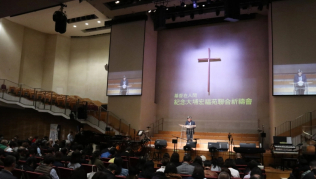NEW ORLEANS (AP) - In the dark of dawn 65 miles south of this shattered city, several hundred people bowed their heads in silence, marking the moment a year ago when the eye of Hurricane Katrina passed overhead at 6:10 a.m.
The tiny town of Buras was swept into the Gulf of Mexico and hours later, New Orleans' crucial levees were overtopped, unleashing one of the worst natural disasters in U.S. history.
A year later, beginning with a service of hymns inside the gutted Buras fire department, the Gulf Coast turned its attention to rituals of mourning and celebrations of life.
In pockmarked neighborhoods choked with weeds, in church pews and at City Hall, residents began gathering for vigils to mark the anniversary of Hurricane Katrina. They remembered the dead, and planned to ring bells to mark the moment one of the city's flood walls breached and water engulfed the northern edges of the city.
In one of the Crescent City's age-old traditions, a jazz funeral will wind through downtown streets, beginning with a somber dirge and ending with a song of joy.
At the city's convention center, where for days haggard refugees waited in vain for food, medical assistance and buses, President Bush was expected to join an ecumenical prayer service. Others planned to mark the occasion privately at home with their own prayers — including personal calls for protection.
"I'm going to pray to the good Lord that he put his arms around the levees. I'm praying that he hug the levees tight so they don't break again, that he keep us safe," said 58-year-old Doretha Kitchens, whose home in the Lower Ninth Ward was submerged under a 10-foot wave.
Katrina grazed Florida before making landfall at 6:10 a.m. on Aug. 29, 2005, in Buras, a tiny fishing town 65 miles south of New Orleans on one of the fingers of land jutting out into the Gulf of Mexico. Entire blocks of houses, bars and shops vanished, whipped into the Gulf by a wall of water 21 feet high.
In New Orleans, the sun came out after the violent winds subsided, but the worst was yet to come: The industrial canal began to leak, and when two sections of the wall fell, a muddy torrent was released that yanked homes off their foundations.
Throughout the city, other parts of the levee system began to fail. With each breach came a cascade of water, until 80 percent of the city was submerged.
Nearly 1,600 people died in Louisiana, and the rest of the nation watched in horror as survivors begged to be rescued from rooftops or freeway overpasses. Forty-nine bodies remain unidentified in the city's morgue.
Throughout the city, white trailers still line driveways in neighborhoods where debris is stacked up in piles and unchecked weeds have overtaken abandoned houses. Only half the population has returned. Emergency medical care is doled out in an abandoned department store, while six of New Orleans' nine hospitals remain closed. Only 54 of 128 public schools are expected to open this fall.
The one-year mark is a reminder of how much needs to be done — and of how far each survivor has come.
"Only when it's dark can you see the stars," said the Rev. Alex Bellow, at a gathering outside a school in the Lower Ninth Ward. "So when they tell you, 'You're not going to make it,' you keep looking up."
Associated Press writer Mary Foster in Buras, La., contributed to this report.
Copyright © 2006 The Associated Press. All rights reserved. The information contained in the AP News report may not be published, broadcast, rewritten or redistributed without the prior written authority of The Associated Press.







